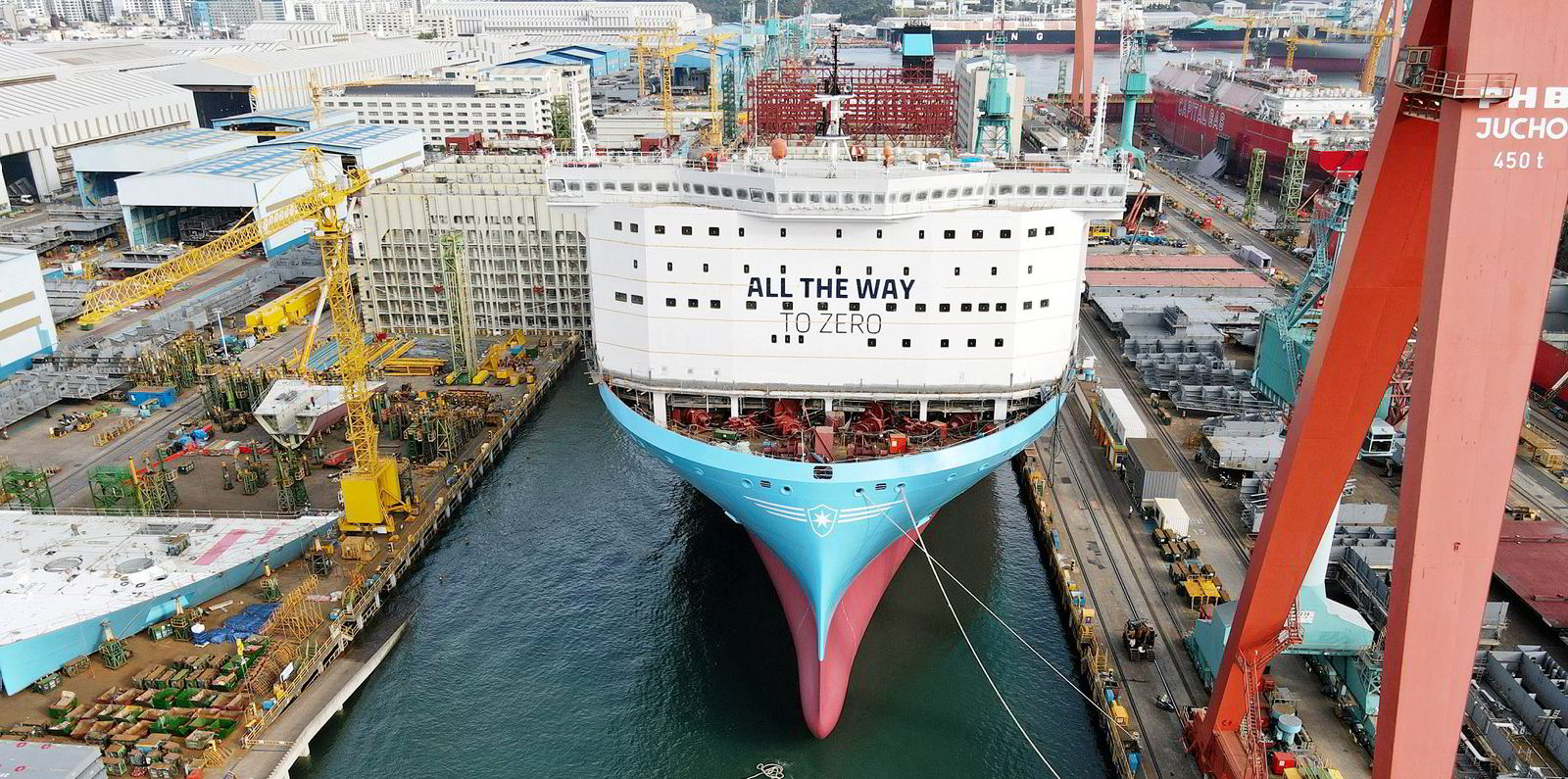Shipping could be well on its way to meet one of IMO’s decarbonisation targets by 2030, according to data from shipowner lobby group, Bimco.
One IMO target, or level of ambition as the Organization calls it, is that at least 5% of the energy used in powering shipping should be from near–zero greenhouse gas emission fuels and energy sources. The second is that the carbon intensity of shipping should decline by at least 40% compared to 2008 levels.
The IMO’s revised strategy also included so-called indicative checkpoints, for 2030 and 2040, where the former is for the total annual greenhouse gas emissions from international shipping to have shrunk by at least 20% compared to 2008.
The main fuels to achieve this are seen to be approved biofuels, blue or green ammonia, methanol and hydrogen as well as liquid natural gas.
Bimco said 29% of the ships on order, representing 42% in terms of deadweight, are expected to be delivered either fully capable or ready to be retrofitted, to use these fuels.
So even if no ships are scrapped between now and 2028 when the current orderbook is delivered, then 4% of the fleet will be prepared to use cleaner fuels.
Bimco noted that 1%-2% of the global fleet is recycled annually, in terms of deadweight, so the percentage of vessels ready to meet the 2030 target will be higher as it will be older ships using bunker fuels that will be removed from the global fleet.
Quoting data from Clarksons Research, Bimco also noted that it is the container fleet that will be leading the way in terms of being ready or capable, stating that when the containership orderbook is delivered at least 23% of the boxship fleet by deadweight capacity will be able to use the newer fuels. 7% of the tanker fleet and 4% of the bulker fleet will be ready.
Bimco chief shipping analyst Niels Rasmussen told TradeWinds that just by assessing the orderbooks of the container, tanker and dry bulk markets it would appear that the industry is on its way to having 5% of the global fleet able to use alternative fuels.
He pointed out that most of the current orderbook will be delivered in 2027, allowing for a further three years for other orders to be added to the statistics, as well as retrofits to existing vessels to be carried out and further scrapping of older tonnage.
However, it will be another question whether these vessels will have the fuel availability and then use the fuels, he said, noting that further work at the IMO is expected to resolve this.



